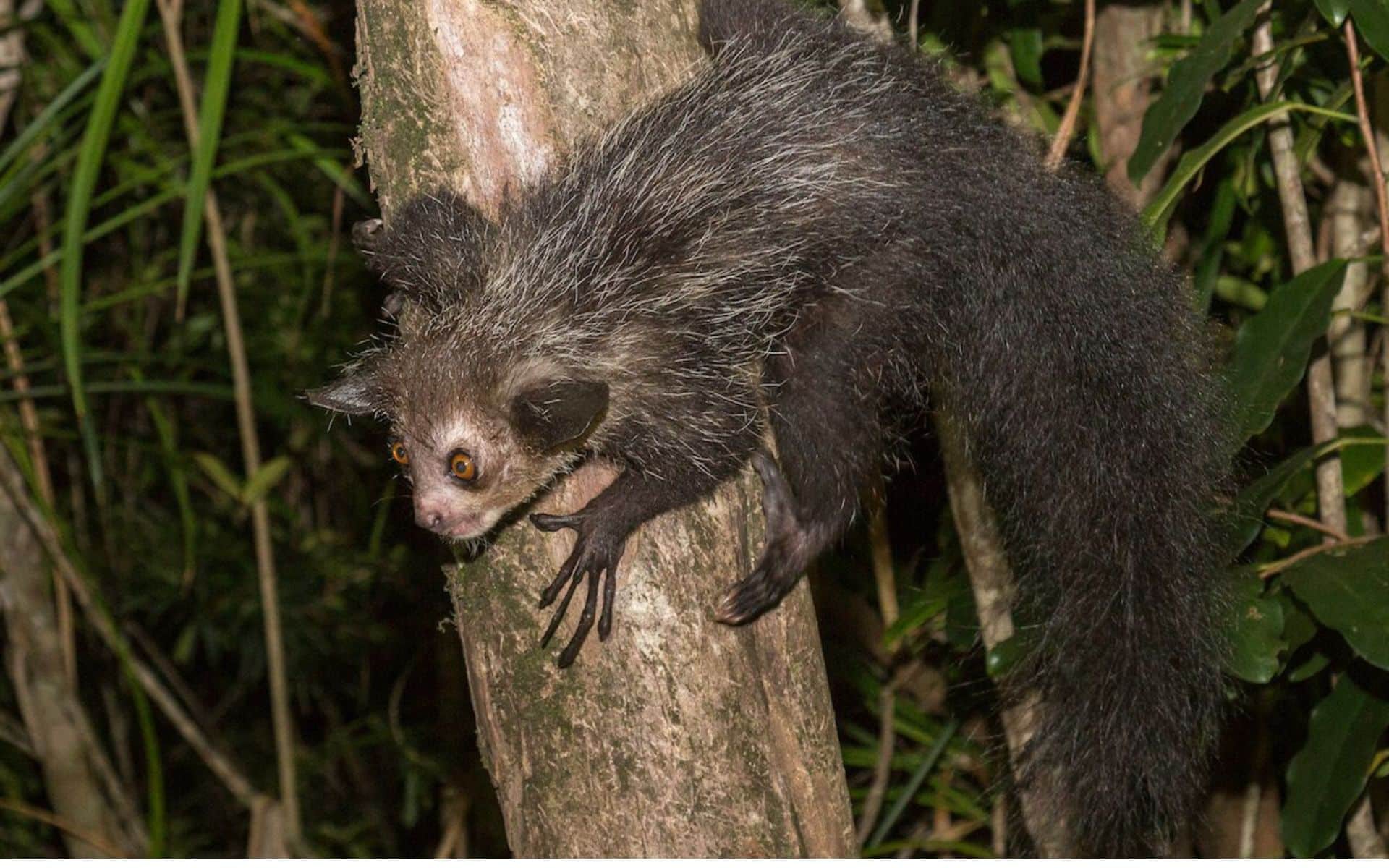Aye Aye: The Nocturnal Lemur with a Unique Finger Adaptation

Unique Physical Traits and Ecological Niche
The aye-aye (Daubentonia madagascariensis) is a fascinating species of lemur that is native to Madagascar. Known for its unusual appearance, this nocturnal primate possesses several physical characteristics that set it apart from other primates. One of the most notable features is its elongated middle finger, which is not only long but also highly flexible due to a ball-and-socket joint. This unique adaptation allows the aye-aye to perform a specialized feeding technique known as percussive foraging.
During this process, the aye-aye taps on tree bark with its long finger, listening for the echoes that indicate the presence of wood-boring larvae. Once detected, the animal uses its rodent-like incisors, which continuously grow throughout its life, to gnaw a hole in the wood. It then extracts the insect using its elongated finger. This remarkable behavior places the aye-aye in a distinct ecological niche, making it one of the few primates that rely on such a specialized method of foraging.
Nocturnal Lifestyle and Habitat
As the largest nocturnal lemur, the aye-aye typically weighs around 4 pounds (1.8 kilograms) and can measure up to 24 inches (60 centimeters) from nose to tail tip. These animals are entirely arboreal, meaning they spend most of their time in the treetops of Madagascar’s forests. Their large, round eyes and bat-like ears provide exceptional night vision and auditory perception, which are crucial for navigating and foraging in the dark.
During the day, aye-ayes rest in spherical nests made from leaves and branches, often hidden high in the canopy. These nests serve as both camouflage and protection from predators, such as the fossa (Cryptoprocta ferox), a carnivorous mammal that is one of the primary threats to the aye-aye.
Development and Appearance
Juvenile aye-ayes have a different appearance compared to adults. At birth, they are covered in silver fur with a dorsal stripe, which gradually changes into thick, yellow-brown fur tipped with white as they mature. This transformation in coat color plays an important role in camouflage and is significant for behavioral research, as it reflects the developmental stages of the animal.
Unusual Behaviors and Recent Discoveries
In addition to their unique feeding habits, aye-ayes have drawn attention for their peculiar behaviors. A 2022 study published in the Journal of Zoology observed individuals inserting their long fingers deep into their nasal cavities, reaching as far as the back of the throat before licking the extracted mucus. Researchers suggest that this behavior may be driven by the texture, saltiness, or crunch of the mucus, and could even serve as a form of primitive oral hygiene by preventing bacteria from adhering to their teeth.
Cultural Beliefs and Conservation Status
In Malagasy folklore, aye-ayes are often viewed as omens of death. Some traditions hold that if an aye-aye points its finger at a person, it signals their imminent demise. This belief has led to the killing of aye-ayes on sight, contributing to their endangered status. Although once thought to be extinct, aye-ayes were rediscovered in the wild during the 1950s and are now recognized as an endangered species by international conservation organizations.
Defense Strategies and Survival Tactics
When faced with threats, aye-ayes rely more on stealth than aggression. Their dark fur helps them blend into the shadows of the rainforest, and their acute hearing allows them to detect even the faintest sounds of nearby predators. In situations of danger, they may freeze completely, using stillness and silence to avoid detection. Combined with their agility in moving through the canopy, these strategies help them evade predators such as the fossa.
Understanding the aye-aye’s unique adaptations and behaviors continues to provide valuable insights into primate evolution and ecology. Ongoing research and conservation efforts are essential to ensuring the survival of this enigmatic species.

Comments
Post a Comment